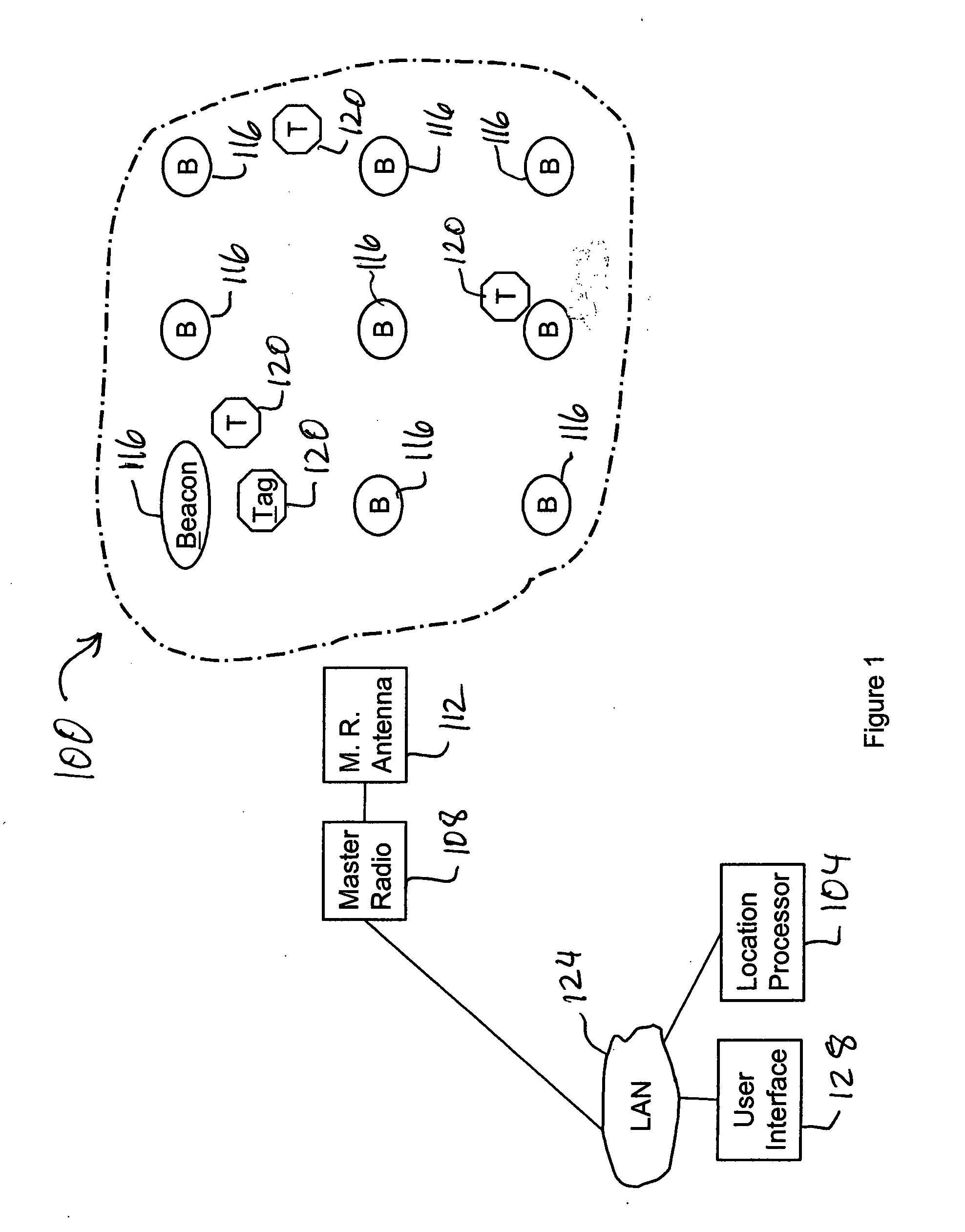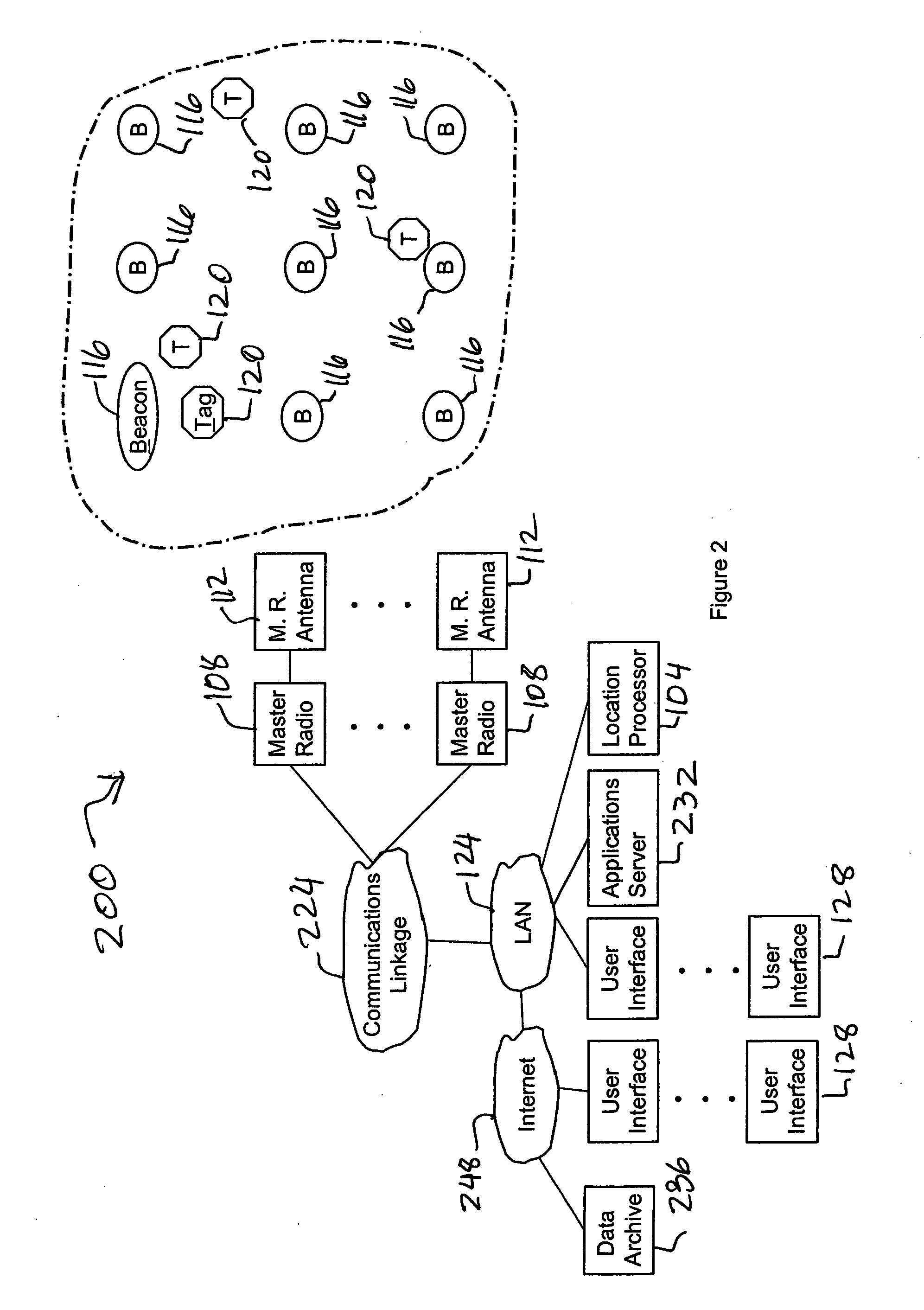Wireless resource monitoring system and method
a resource monitoring and wireless technology, applied in the field of wireless communications, can solve the problems of proprietary and complex single-purpose hardware and software, inability to measure and report the location of resources in the facility, and the cost or complexity of wireless monitoring systems such as radio frequency identification systems, which are too expensive or too complicated for many ordinary applications,
- Summary
- Abstract
- Description
- Claims
- Application Information
AI Technical Summary
Benefits of technology
Problems solved by technology
Method used
Image
Examples
Embodiment Construction
[0018] A wireless resource monitoring system and method provides a solution to the problems associated with existing RFID systems. In one embodiment, the wireless resource monitoring system is a radio frequency (RF) resource monitoring system and method. The wireless resource monitoring system and method may be used in many applications such as, for example, resource tracking, asset inventory, resource recovery, and personnel, staff, visitor, and resource management, and can be deployed in a building, a warehouse, or in any other desired location.
[0019] In one embodiment, the wireless resource monitoring system and method overcomes the disadvantages associated with using proprietary hardware, software, and protocols by building upon the public communications standard known as the IEEE 802.15.4 standard. The IEEE 802.15.14 standard provides a basis for multi-industry use of common hardware (e.g., silicon chip sets for radios) as well as lower levels of common software and protocols ...
PUM
 Login to View More
Login to View More Abstract
Description
Claims
Application Information
 Login to View More
Login to View More - R&D
- Intellectual Property
- Life Sciences
- Materials
- Tech Scout
- Unparalleled Data Quality
- Higher Quality Content
- 60% Fewer Hallucinations
Browse by: Latest US Patents, China's latest patents, Technical Efficacy Thesaurus, Application Domain, Technology Topic, Popular Technical Reports.
© 2025 PatSnap. All rights reserved.Legal|Privacy policy|Modern Slavery Act Transparency Statement|Sitemap|About US| Contact US: help@patsnap.com



